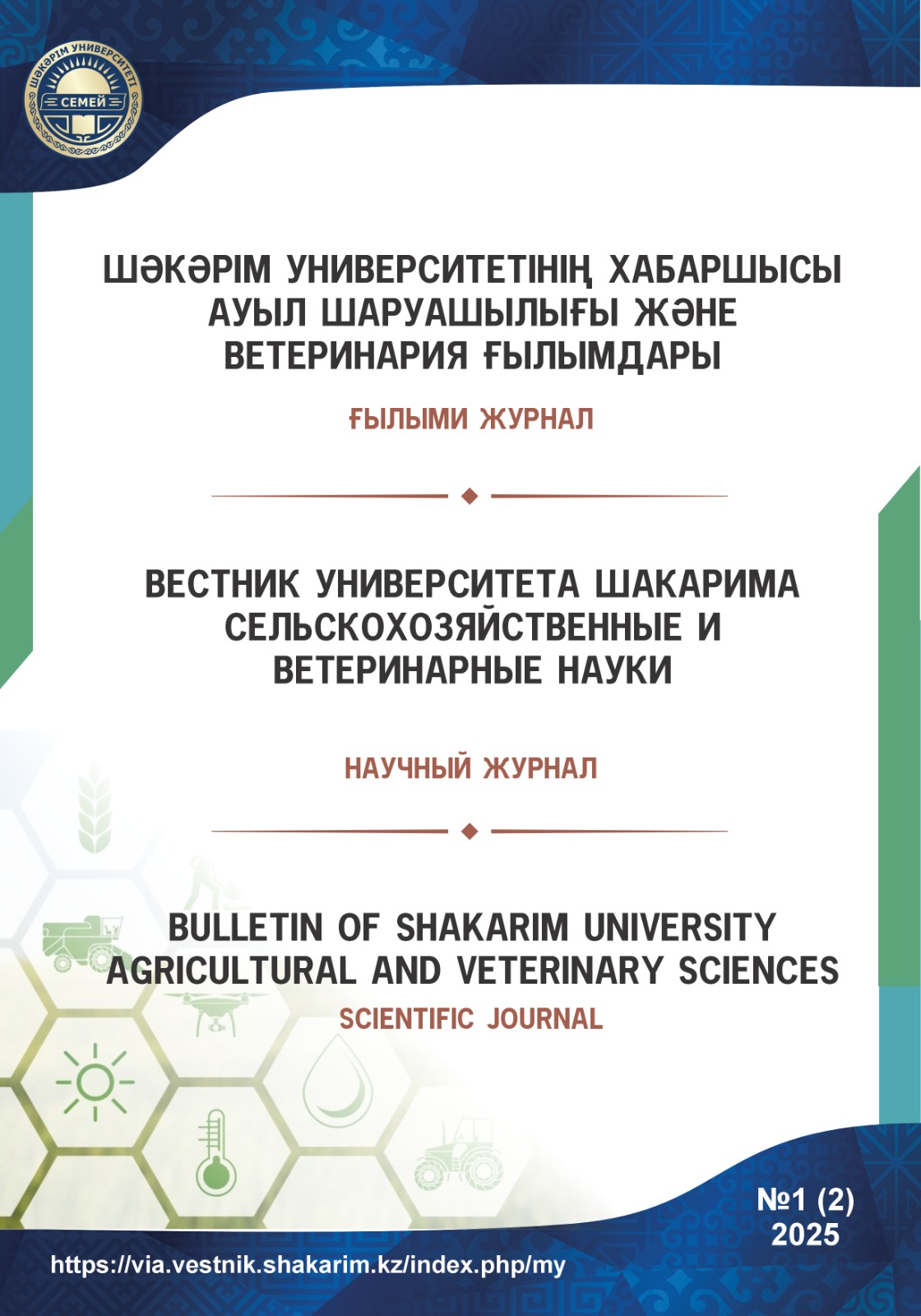AGROCHEMICAL PROPERTIES AS A FUNCTION AND FACTOR OF MATHEMATICAL MODELS OF REGIONAL SOIL STANDARDS OF THE ZONE OF GRAY FOREST AND DEEP-SALINE SOILS OF THE ALTAI TERRITORY
Keywords:
agrochemical properties, standard, taxonomic weight of a feature, taxonomic group of soils, quantitative model, qualitative model, monitoring.Abstract
The paper substantiates regional soil standards for the 22nd soil district of the Altai Territory. Using information and logical analysis, the taxonomic mass of diagnostic features (agrochemical properties of soils) of regional soil standards for the soil area of the gray forest soil of the black taiga on the outskirts of the Salair ring of the Altai Territory was determined. It has been established that the following agrochemical characteristics have the highest values of taxonomic weight: humus content, reaction of the medium, and the totality of absorbed bases. This suggests that these properties more intensively reflect the differences associated with the manifestation of various processes of soil formation (turf, clay). A special condition of the features is calculated for each taxon (standard). The set of diagnostic features can serve as a characteristic (i.e., a regional standard) of the virtual (most likely) image of a certain taxonomic group (type, subtype) for a given region. Trees and shrubs perceive precipitation differently. Depending on the temperature and humidity of the air, plants need water. If the temperature is high and the humidity is low, then you need a lot of water. In the forest area, that is, by composition, age, water supply, and meteorological conditions. Pure pines from a mixed forest consume less water. As the age of the wood increases, the moisture consumption increases.
Downloads
Downloads
Published
Issue
Section
License
Copyright (c) 2025 The editorial staff of the journal follows the copyright law of the Republic of Kazakhstan and relevant international agreements. The authors retain their copyright and provide the journal «Bulletin of Shakarim University. Series of Historical Sciences» right of first publication of the manuscript. The author has the right to copy and distribute the material in any medium and in any format, subject to appropriate reference to the journal. Readers and users can freely copy, distribute and adapt the material, provided that the author of the work is indicated and a link to this journal is provided. Copyright presupposes the integrity and responsibility of each co-author who made a significant contribution to the writing of the article. The author has the right to store his publications in an institutional or other repository of his choice, provided he provides the appropriate link to the journal’s website.

This work is licensed under a Creative Commons Attribution-NonCommercial 4.0 International License.
Copyright presupposes the integrity and responsibility of each co-author who made a significant contribution to the writing of the article.
The author has the right to store his publications in an institutional or other repository of his choice, provided he provides the appropriate link to the journal’s website.




